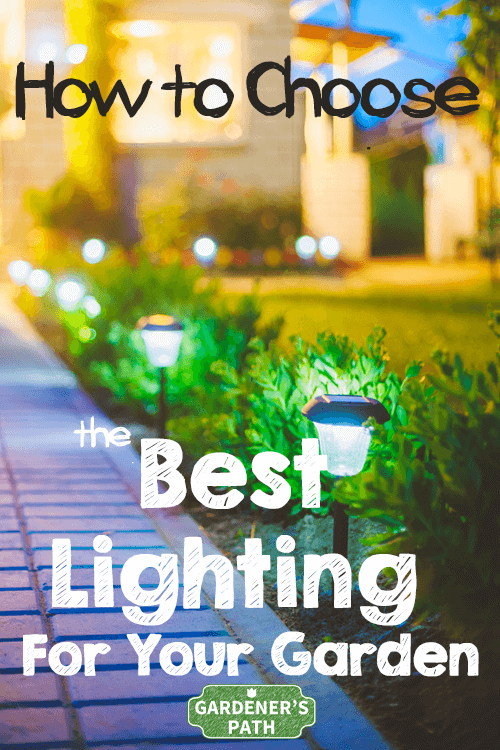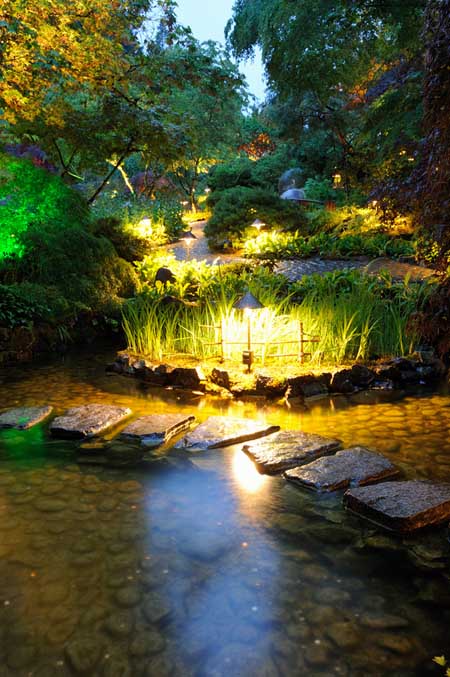So why bother to brighten your garden at night? Well, it’s a cliché but true all the same – many of us now see the garden as an extra room, an extra living space that we want to use and enjoy. So it stands to reason that we want to spend as much time in it as possible – even when the moon’s out. There’s a number of different ways you can go about lighting your garden and most of them you should be able to complete with only minimal (although vital) professional help.
Of course you could call in the professionals to do the lot. Mains-powered units are certainly impressive but installing them means a lot of upheaval and mess, as the armored cables need to be buried at least 60cm under your borders. There’s the cost as well, and don’t forget the impact it will have on the electricity bill.
Solar – the cheapest, quickest, and simplest
Solar lights are a good choice and relatively cheap to buy. They’re also a solution if you don’t have an electricity source for the garden and are also very at the end of a long garden, where cables may not reach. Mounted on spikes, solar units can be easily moved around the garden (best to site them in a sunny spot!) and nowadays are decently bright due advancements in battery, solar panel, and LED bulb technologies. Whilst they may not powerful enough to brighten up very large features and walls, they’re great used for lining paths, showing where the steps are, and even as spotlights to highlight small to medium landscape details. I find that many of the units sold at the big box stores are cheaply constructed and fail after a season or two. Nowdays, I only buy the Westinghouse brand – these are the guys that invented AC electricity (with the help of Nikola Tesla) and they know their stuff and make excellent products.
So how to use them?
Spotlighting is used to highlight particular plants or garden features. It creates dramatic effects, drawing the eye towards it, and so works well when seen from a distance. Up lighting involves placing the lamp below the plant, angling it so that it shines up through the branches or foliage. It’s particularly effective used to brighten a tree or large shrub, and is a good way of adding a bit of extra height to a garden. Remember, you don’t have to stick to white. Create different moods with blues, purples or flame shades. The reverse is down lighting, which is the best way to create pools of brightness. Fix the spotlights to a fence, pergola or tree, or on the wall around a patio or decking. They can then be used to pick out certain features, such as a garden ornament, or particular pots and containers. The term ‘grazing’ refers to lamps that are angled to show off a particular surface, such as a dry-stone wall, or the slats of a fence. It’s also a clever way to bring out the color on a painted wall. You can use a hidden light source to silhouette plants or objects from behind, creating intriguing shadows and giving the garden depth. It’s particularly good with architectural plants, such as yuccas and phormiums. Waterproof lamps in ponds or fountains are dramatic but can verge on the tacky unless carefully positioned. Use them to pick out moving water, rather than flooding the whole pool with photons. For special occasions, flares look fantastic dotted amongst the beds – the citronella ones will also help keep the midges at bay – and lanterns with simple tea lights are also effective. But for a more permanent arrangement that can highlight the best aspects of your garden, go for a simple off-the-shelf number from the local DIY store or better yet, from online sources (they deliver to you!). There are a number of kits where you just run the cable round the garden, clipping the lamps on wherever takes your fancy. How many you’ll need obviously depends on the size of your garden. As for power, a 12- or 24-volt system uses a transformer plugged into the mains to reduce the voltage. Then plug the lamps into the transformer. If you need an outside waterproof plug, this is where the electrician comes in. However, all this is not to say that darkness doesn’t have a beauty all of its own, or that your neighbors want their lawn lit up by a badly positioned spot. There needs to be a touch of subtlety about any lighting scheme you install. In most towns and cities it’s already impossible to escape the orange glow of a thousand street lamps, but it’s phosphorescence we really don’t want to add to. So with gardens lights, less is certainly more.



